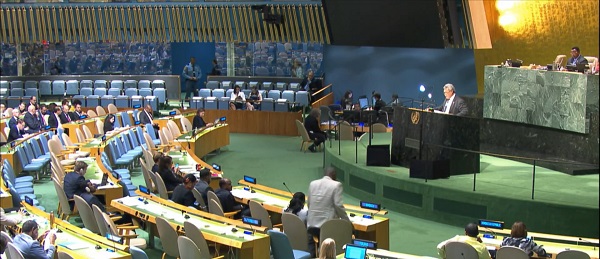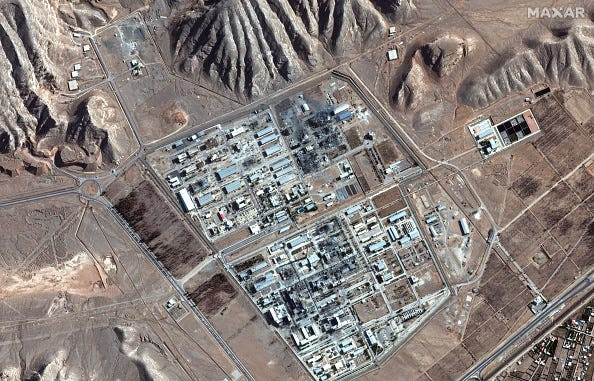Economy
Here’s how First Nations can access a reliable source of revenue

From the Fraser Institute
According to Pierre Poilievre, a Conservative government would permit First Nations to directly receive tax revenues from resource development on their ancestral territories. Political leaders of all parties should commit to such direct taxation. Because time is short.
Faced with the prospect of tariffs and other hostile American actions, Canada must build new energy infrastructure, mine critical minerals and diversify trade.
First Nations participation is critical to these plans. But too often, proposed infrastructure and resource projects on their territories become mired in lengthy negotiations that benefit only bureaucrats and lawyers. The First Nations Resource Charge (FNRC), a brainchild of the First Nations Tax Commission, could help cut through some of that red tape.
Currently, First Nations, the federal government and businesses negotiate agreements through a variety of mechanisms that establish the financial, environmental and cultural terms for a proposed development. As part of any agreement, Ottawa collects tax revenue from the project, then remits a portion of that revenue to the First Nation. The process is bureaucratic, time-consuming and paternalistic.
Under one version of the proposed charge, the First Nation would directly collect a portion of the federal corporate tax from the developer. The federal government, in turn, would issue the corporation an equivalent tax credit.
In effect, Ottawa would transfer tax points to First Nations.
“The Resource Charge doesn’t mean we won’t say no to bad projects where the costs to us are too high,” said Chief Darren Blaney of B.C’s Homalco First Nation, when the Conservatives first laid out the proposal last year. “It could mean, however, that good projects happen faster. This is what we all want.”
Poilievre referenced the proposed tax transfer in his Feb. 15 rally when he vowed to remove regulatory obstacles to fast-track resource development projects.
“We will incentivize Indigenous leaders to support these projects by letting companies pay a share of their federal corporate taxes to local First Nations,” he declared. “I want the First Nations people of Canada to be the richest people in the world.”
The First Nations Tax Commission first came up with the idea. Poilievre’s federal Conservatives are the first political party to embrace it. But there’s no reason why support for resource charges could not be bipartisan.
Mark Carney, the frontrunning candidate to succeed Justin Trudeau as Liberal Leader and prime minister, has vowed to use “all of the powers of the federal government… to accelerate the major projects that we need.” Supporting the FNRC would further that goal.
That said, resistance has already emerged.
“Most Indigenous leaders would see right through (what Poilievre said) because we’ve been around that corner a few times,” Dawn Martin-Hill, professor emeritus of Indigenous Studies at McMaster University, told the Canadian Press. “Selling your soul to have what other Canadians have, which is access to clean drinking water coming out of your tap, is highly problematic.”
But Prof. Martin-Hill inadvertently makes the case for the FNRC. Municipal governments raise funds by taxing the property of individuals and businesses and using the revenue to, among other things, provide clean drinking water. A First Nation that taxed a business operating on its territory, and used the revenue to provide clean drinking water for people on reserve, would simply be doing what governments are supposed to do.
Existing agreements, though cumbersome, have brought major new revenues to some reserves. The FNRC could increase revenues and First Nations autonomy.
Given the complexities of the tax code, and the limited administrative capacity of some First Nations, some agreements might see the federal government continuing to collect taxes and then remitting the First Nation’s portion to that government. The goal would be to ensure that revenues streams are transparent, predictable and support the greatest possible autonomy for each First Nation.
Any government committed to implementing the FNRC should convene a working group of First Nations leaders, private-sector executives and government officials to work out a framework agreement.
If the Conservatives win the next election, the working group could be part of a task force on tax reform that Poilievre said he intends to establish.
The FNRC would be voluntary. Communities could opt in or opt out. Provincial governments might also participate, sharing a portion of their taxes with First Nations.
If it works, a First Nations Resource Charge could speed the approval of lumber, mining, pipelines and other resource-related projects on the traditional lands of First Nations. It could provide reserves with stable and autonomous funding.
It’s an idea worth trying, regardless of which party forms the next government.
Business
Trump confirms 35% tariff on Canada, warns more could come

Quick Hit:
President Trump on Thursday confirmed a sweeping new 35% tariff on Canadian imports starting August 1, citing Canada’s failure to curb fentanyl trafficking and retaliatory trade actions.
Key Details:
- In a letter to Canadian Prime Minister Mark Carney, Trump said the new 35% levy is in response to Canada’s “financial retaliation” and its inability to stop fentanyl from reaching the U.S.
- Trump emphasized that Canadian businesses that relocate manufacturing to the U.S. will be exempt and promised expedited approvals for such moves.
- The administration has already notified 23 countries of impending tariffs following the expiration of a 90-day negotiation window under Trump’s “Liberation Day” trade policy.
Diving Deeper:
President Trump escalated his tariff strategy on Thursday, formally announcing a 35% duty on all Canadian imports effective August 1. The move follows what Trump described as a breakdown in trade cooperation and a failure by Canada to address its role in the U.S. fentanyl crisis.
“It is a Great Honor for me to send you this letter in that it demonstrates the strength and commitment of our Trading Relationship,” Trump wrote to Prime Minister Mark Carney. He added that the tariff response comes after Canada “financially retaliated” against the U.S. rather than working to resolve the flow of fentanyl across the northern border.
Trump’s letter made clear the tariff will apply broadly, separate from any existing sector-specific levies, and included a warning that “goods transshipped to evade this higher Tariff will be subject to that higher Tariff.” The president also hinted that further retaliation from Canada could push rates even higher.
However, Trump left the door open for possible revisions. “If Canada works with me to stop the flow of Fentanyl, we will, perhaps, consider an adjustment to this letter,” he said, adding that tariffs “may be modified, upward or downward, depending on our relationship.”
Canadian companies that move operations to the U.S. would be exempt, Trump said, noting his administration “will do everything possible to get approvals quickly, professionally, and routinely — In other words, in a matter of weeks.”
The U.S. traded over $762 billion in goods with Canada in 2024, with a trade deficit of $63.3 billion, a figure Trump called a “major threat” to both the economy and national security.
Speaking with NBC News on Thursday, Trump suggested even broader tariff hikes are coming, floating the idea of a 15% or 20% blanket rate on all imports. “We’re just going to say all of the remaining countries are going to pay,” he told Meet the Press moderator Kristen Welker, adding that “the tariffs have been very well-received” and noting that the stock market had hit new highs that day.
The Canadian announcement is part of a broader global tariff rollout. In recent days, Trump has notified at least 23 countries of new levies and revealed a separate 50% tariff on copper imports.
“Not everybody has to get a letter,” Trump said when asked if other leaders would be formally notified. “You know that. We’re just setting our tariffs.”
Business
UN’s ‘Plastics Treaty’ Sports A Junk Science Wrapper


From the Daily Caller News Foundation
By Craig Rucker
According to a study in Science Advances, over 90% of ocean plastic comes from just 10 rivers, eight of which are in Asia. The United States, by contrast, contributes less than 1%. Yet Pew treats all nations as equally responsible, promoting one-size-fits-all policies that fail to address the real source of the issue.
Just as people were beginning to breathe a sigh of relief thanks to the Trump administration’s rollback of onerous climate policies, the United Nations is set to finalize a legally binding Global Plastics Treaty by the end of the year that will impose new regulations, and, ultimately higher costs, on one of the world’s most widely used products.
Plastics – derived from petroleum – are found in everything from water bottles, tea bags, and food packaging to syringes, IV tubes, prosthetics, and underground water pipes. In justifying the goal of its treaty to regulate “the entire life cycle of plastic – from upstream production to downstream waste,” the U.N. has put a bull’s eye on plastic waste. “An estimated 18 to 20 percent of global plastic waste ends up in the ocean,” the UN says.
As delegates from over 170 countries prepare for the final round of negotiations in Geneva next month, debate is intensifying over the future of plastic production, regulation, and innovation. With proposals ranging from sweeping bans on single-use plastics to caps on virgin plastic output, policymakers are increasingly citing the 2020 Pew Charitable Trusts report, Breaking the Plastic Wave, as one of the primary justifications.
But many of the dire warnings made in this report, if scrutinized, ring as hollow as an empty PET soda bottle. Indeed, a closer look reveals Pew’s report is less a roadmap to progress than a glossy piece of junk science propaganda—built on false assumptions and misguided solutions.
Pew’s core claim is dire: without urgent global action, plastic entering the oceans will triple by 2040. But this alarmist forecast glosses over a fundamental fact—plastic pollution is not a global problem in equal measure. According to a study in Science Advances, over 90% of ocean plastic comes from just 10 rivers, eight of which are in Asia. The United States, by contrast, contributes less than 1%. Yet Pew treats all nations as equally responsible, promoting one-size-fits-all policies that fail to address the real source of the issue.
This blind spot has serious consequences. Pew’s solutions—cutting plastic production, phasing out single-use items, and implementing rigid global regulations—miss the mark entirely. Banning straws in the U.S. or taxing packaging in Europe won’t stop waste from being dumped into rivers in countries with little or no waste infrastructure. Policies targeting Western consumption don’t solve the problem—they simply shift it or, worse, stifle useful innovation.
The real tragedy isn’t plastic itself, but the mismanagement of plastic waste—and the regulatory stranglehold that blocks better solutions. In many countries, recycling is a government-run monopoly with little incentive to innovate. Meanwhile, private-sector entrepreneurs working on advanced recycling, biodegradable materials, and AI-powered sorting systems face burdensome red tape and market distortion.
Pew pays lip service to innovation but ultimately favors centralized planning and control. That’s a mistake. Time and again, it’s been technology—not top-down mandates—that has delivered environmental breakthroughs.
What the world needs is not another top-down, bureaucratic report like Pew’s, but an open dialogue among experts, entrepreneurs, and the public where new ideas can flourish. Imagine small-scale pyrolysis units that convert waste into fuel in remote villages, or decentralized recycling centers that empower informal waste collectors. These ideas are already in development—but they’re being sidelined by policymakers fixated on bans and quotas.
Worse still, efforts to demonize plastic often ignore its benefits. Plastic is lightweight, durable, and often more environmentally efficient than alternatives like glass or aluminum. The problem isn’t the material—it’s how it has been managed after its use. That’s a “systems” failure, not a material flaw.
Breaking the Plastic Wave champions a top-down, bureaucratic vision that limits choice, discourages private innovation, and rewards entrenched interests under the guise of environmentalism. Many of the groups calling for bans are also lobbying for subsidies and regulatory frameworks that benefit their own agendas—while pushing out disruptive newcomers.
With the UN expected to finalize the treaty by early 2026, nations will have to face the question of ratification. Even if the Trump White House refuses to sign the treaty – which is likely – ordinary Americans could still feel the sting of this ill-advised scheme. Manufacturers of life-saving plastic medical devices, for example, are part of a network of global suppliers. Companies located in countries that ratify the treaty will have no choice but to pass the higher costs along, and Americans will not be spared.
Ultimately, the marketplace of ideas—not the offices of policy NGOs—will deliver the solutions we need. It’s time to break the wave of junk science—not ride it.
Craig Rucker is president of the Committee For A Constructive Tomorrow (www.CFACT.org).
-

 Business2 days ago
Business2 days agoWEF-linked Linda Yaccarino to step down as CEO of X
-

 Automotive2 days ago
Automotive2 days agoAmerica’s EV Industry Must Now Compete On A Level Playing Field
-

 Business2 days ago
Business2 days ago‘Experts’ Warned Free Markets Would Ruin Argentina — Looks Like They Were Dead Wrong
-

 International2 days ago
International2 days agoSecret Service suspends six agents nearly a year after Trump assassination attempt
-

 Business1 day ago
Business1 day agoCarney government should recognize that private sector drives Canada’s economy
-

 Bruce Dowbiggin1 day ago
Bruce Dowbiggin1 day agoThe Covid 19 Disaster: When Do We Get The Apologies?
-

 Alberta1 day ago
Alberta1 day agoFourteen regional advisory councils will shape health care planning and delivery in Alberta
-

 Alberta1 day ago
Alberta1 day agoAlberta school boards required to meet new standards for school library materials with regard to sexual content







